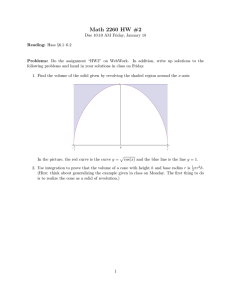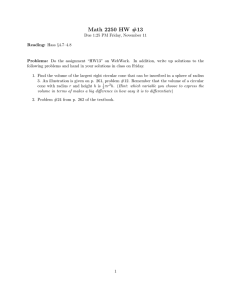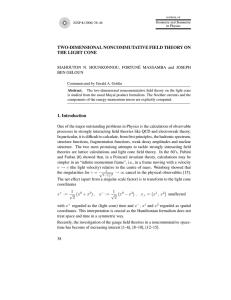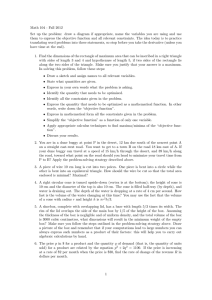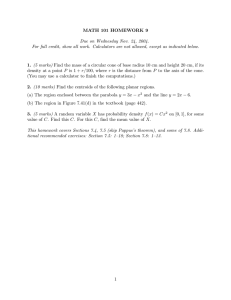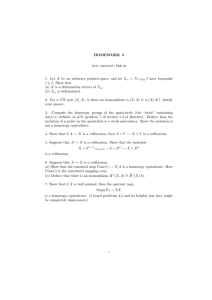LECTURE 7: COFIBERS 1. Mapping cone
advertisement
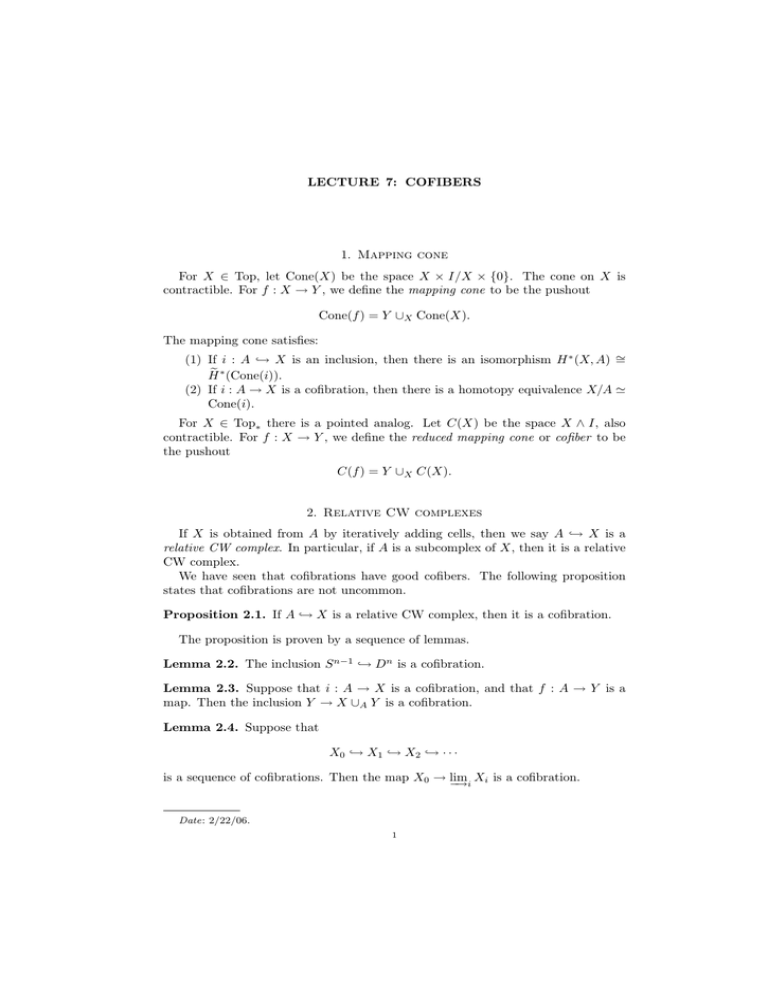
LECTURE 7: COFIBERS
1. Mapping cone
For X ∈ Top, let Cone(X) be the space X × I/X × {0}. The cone on X is
contractible. For f : X → Y , we define the mapping cone to be the pushout
Cone(f ) = Y ∪X Cone(X).
The mapping cone satisfies:
(1) If i : A �→ X is an inclusion, then there is an isomorphism H ∗ (X, A) ∼
=
� ∗ (Cone(i)).
H
(2) If i : A → X is a cofibration, then there is a homotopy equivalence X/A �
Cone(i).
For X ∈ Top∗ there is a pointed analog. Let C(X) be the space X ∧ I, also
contractible. For f : X → Y , we define the reduced mapping cone or cofiber to be
the pushout
C(f ) = Y ∪X C(X).
2. Relative CW complexes
If X is obtained from A by iteratively adding cells, then we say A �→ X is a
relative CW complex. In particular, if A is a subcomplex of X, then it is a relative
CW complex.
We have seen that cofibrations have good cofibers. The following proposition
states that cofibrations are not uncommon.
Proposition 2.1. If A �→ X is a relative CW complex, then it is a cofibration.
The proposition is proven by a sequence of lemmas.
Lemma 2.2. The inclusion S n−1 �→ Dn is a cofibration.
Lemma 2.3. Suppose that i : A → X is a cofibration, and that f : A → Y is a
map. Then the inclusion Y → X ∪A Y is a cofibration.
Lemma 2.4. Suppose that
X0 �→ X1 �→ X2 �→ · · ·
is a sequence of cofibrations. Then the map X0 → limi Xi is a cofibration.
−→
Date: 2/22/06.
1
3. Exact sequence of a cofiber
We have the following lemma dual to the lemma for the homotopy fiber.
Lemma 3.1. Let X → Y be a map of unpointed spaces and let Z be a pointed
space. Consider factorizations:
X
f
/Y
/ Cone(f )
g
g
�
{
Z
There is a bijective correspondence
{pointed factorizations g�}
�
{null homotopies gf � ∗}
Corollary 3.2. Let X → Y be a map of spaces, and let Z be a pointed space.
Then the sequence
f
X−
→ Y → Cone(f )
induces an exact sequence of sets
f∗
[Cone(f ), Z]∗ → [Y, Z] −→ [X, Z].
Corollary 3.3. Let X → Y be a map of pointed spaces, and let Z be a pointed
space. Then the sequence
f
X−
→ Y → C(f )
induces an exact sequence of sets
f∗
[C(f ), Z]∗ → [Y, Z]∗ −→ [X, Z]∗ .
Remark 3.4. We will prove later that there are isomorphisms
H n (X, π) ∼
= [X, K(π, n)]
� n (X, π) ∼
H
= [X, K(π, n)]∗
The exact sequences of Corollaries 3.2 and 3.3 then recover part of the cohomology
LES of a pair.
2

